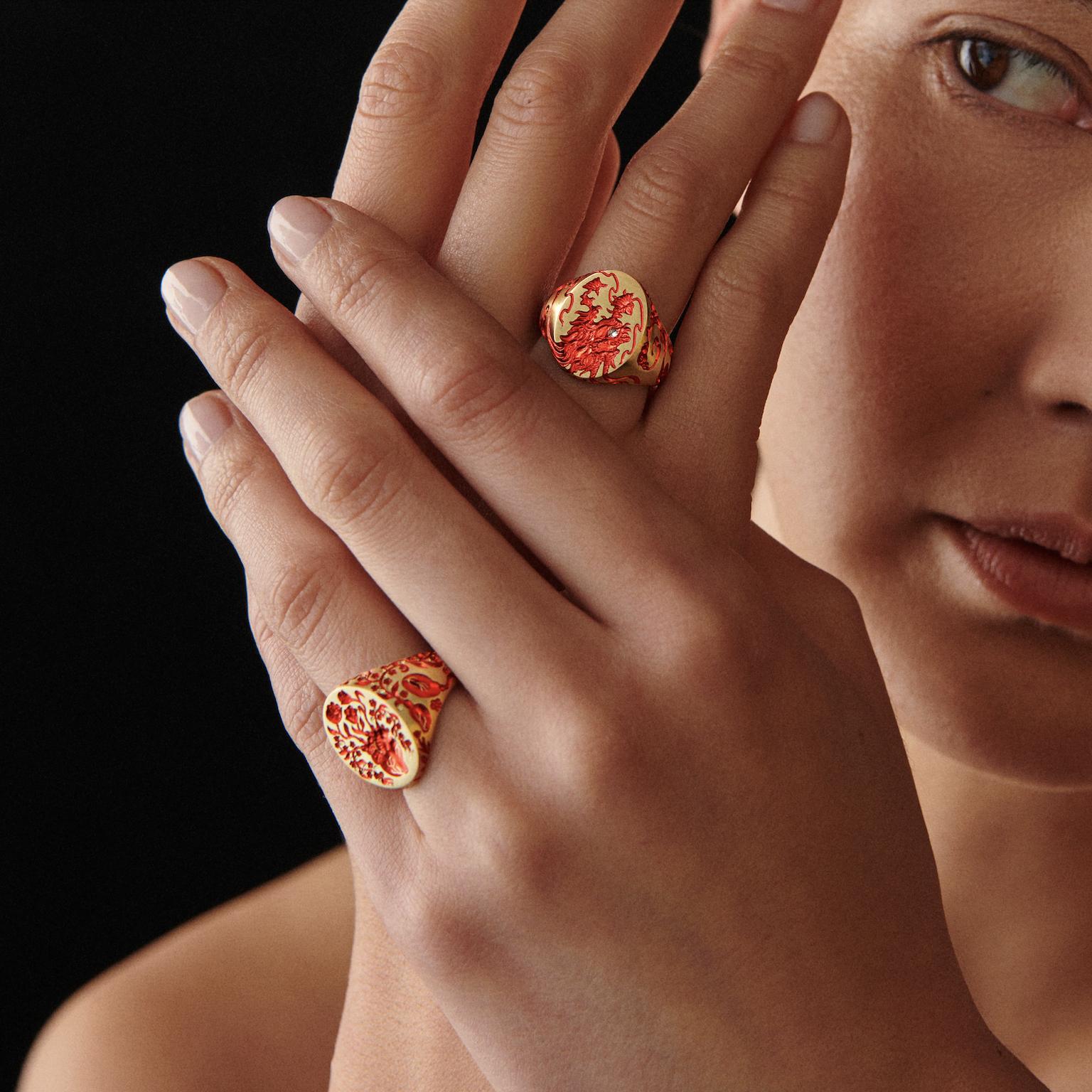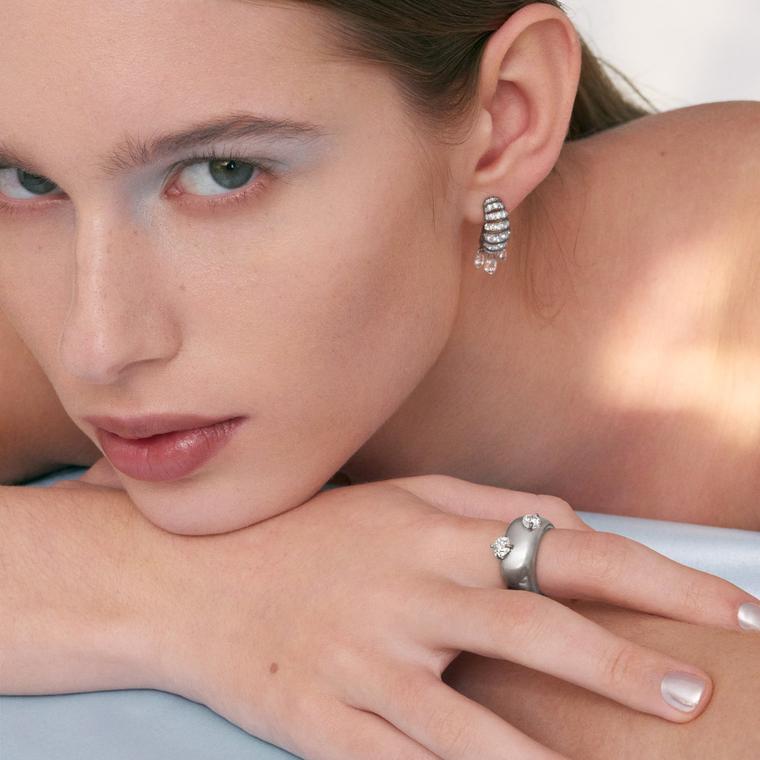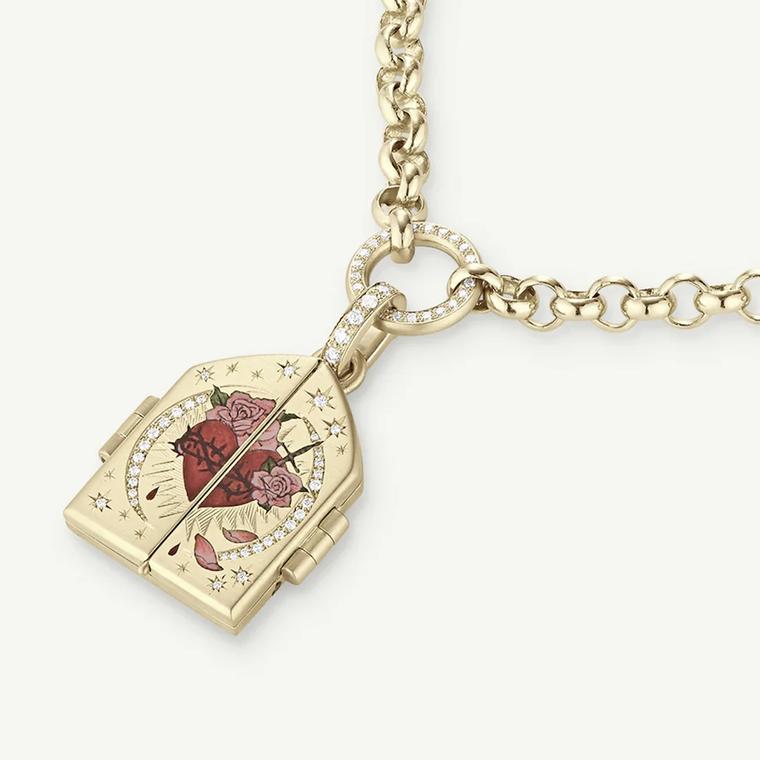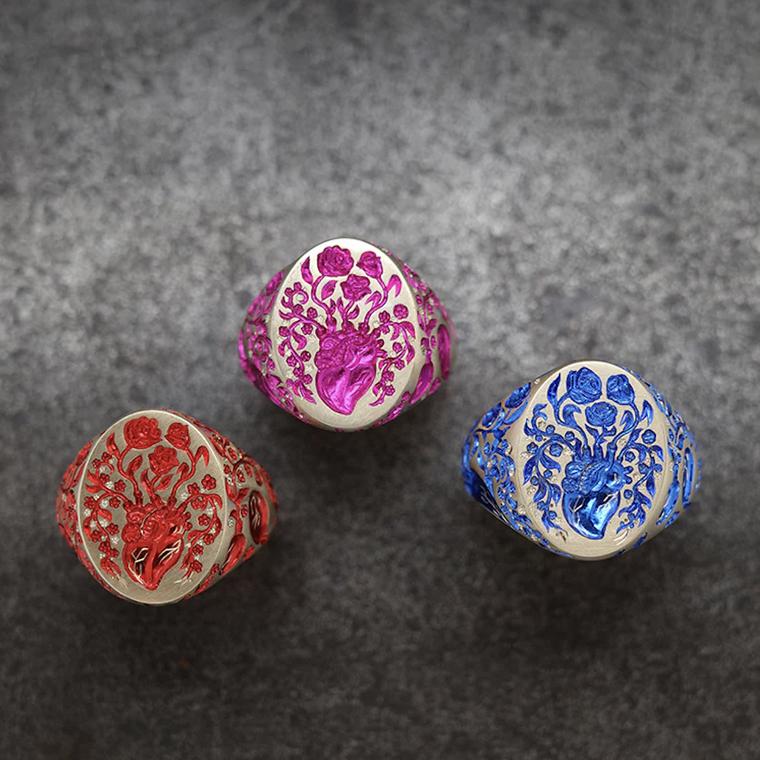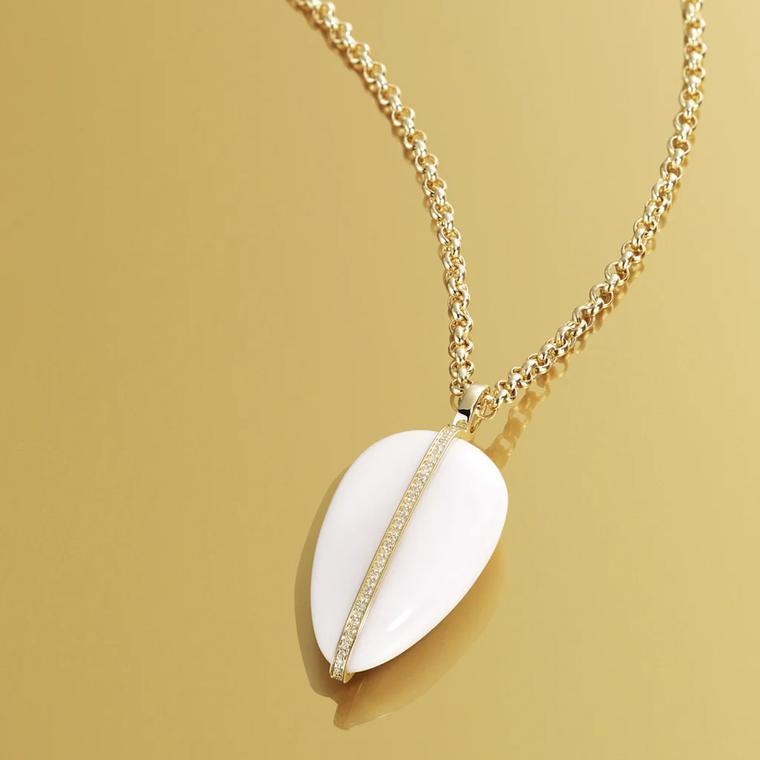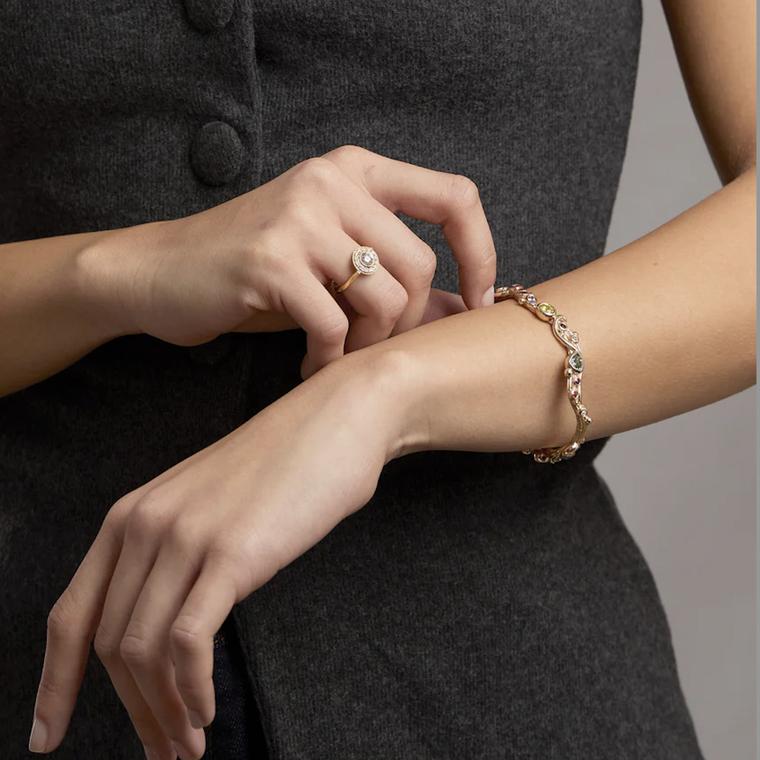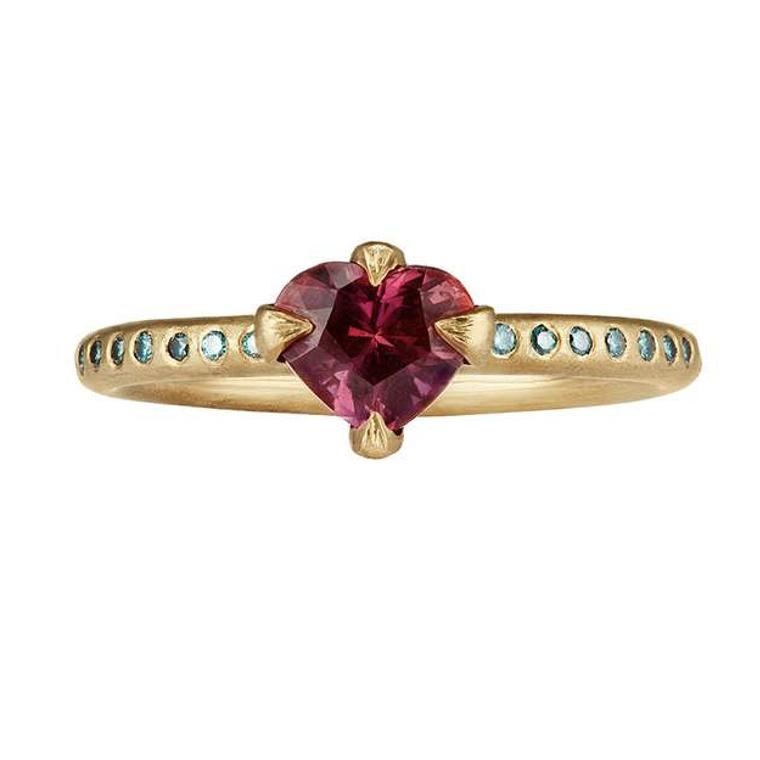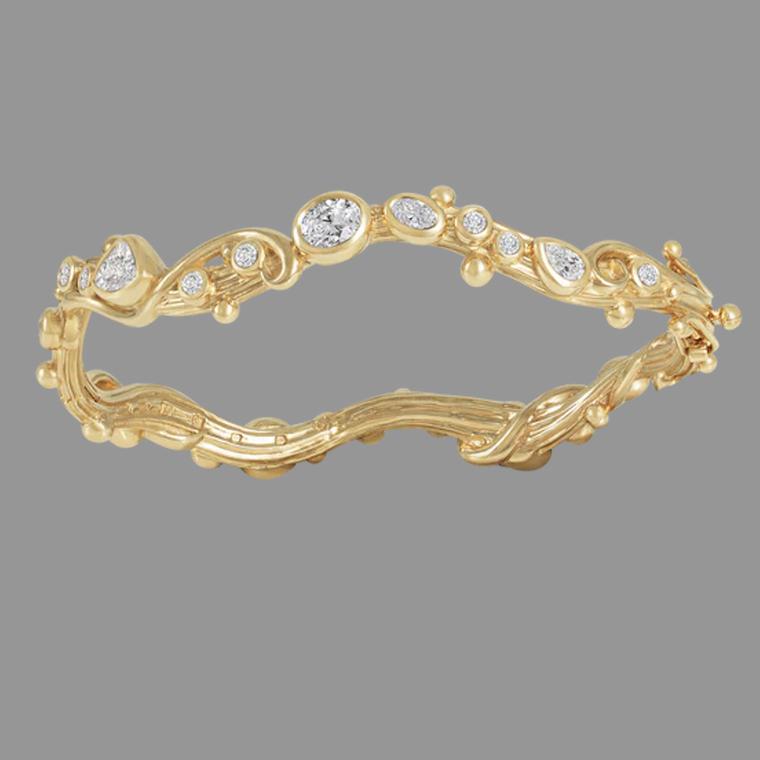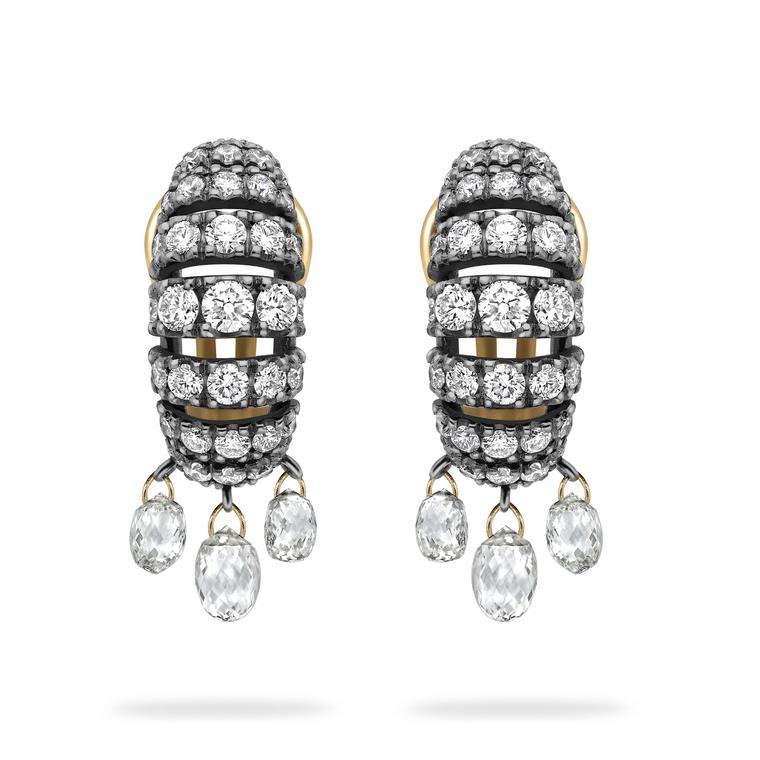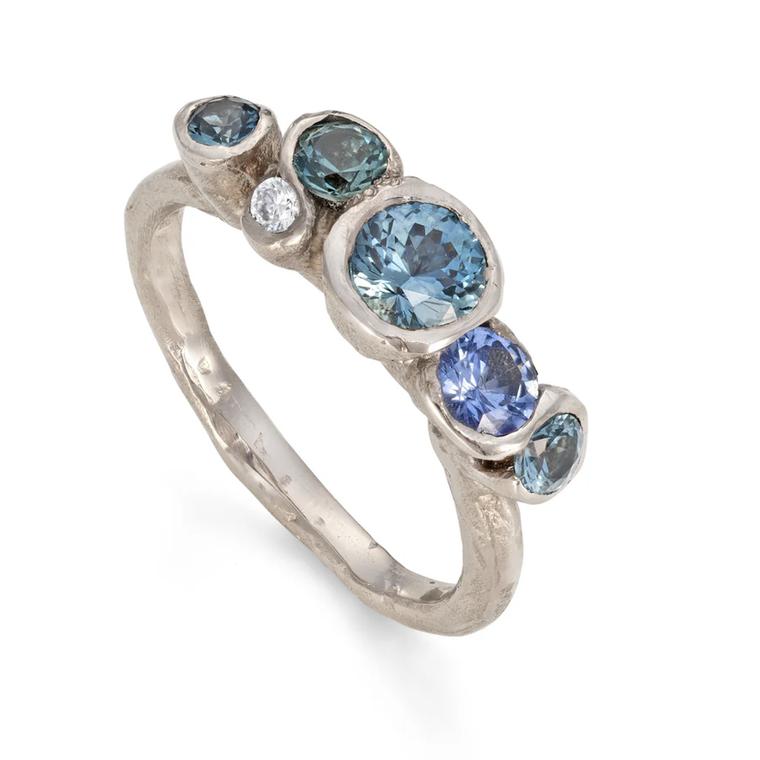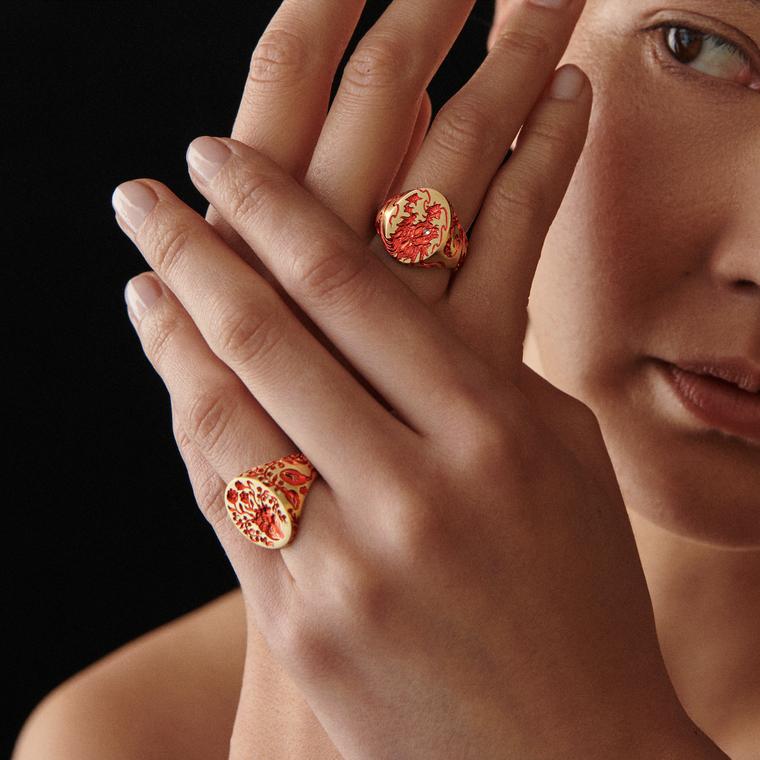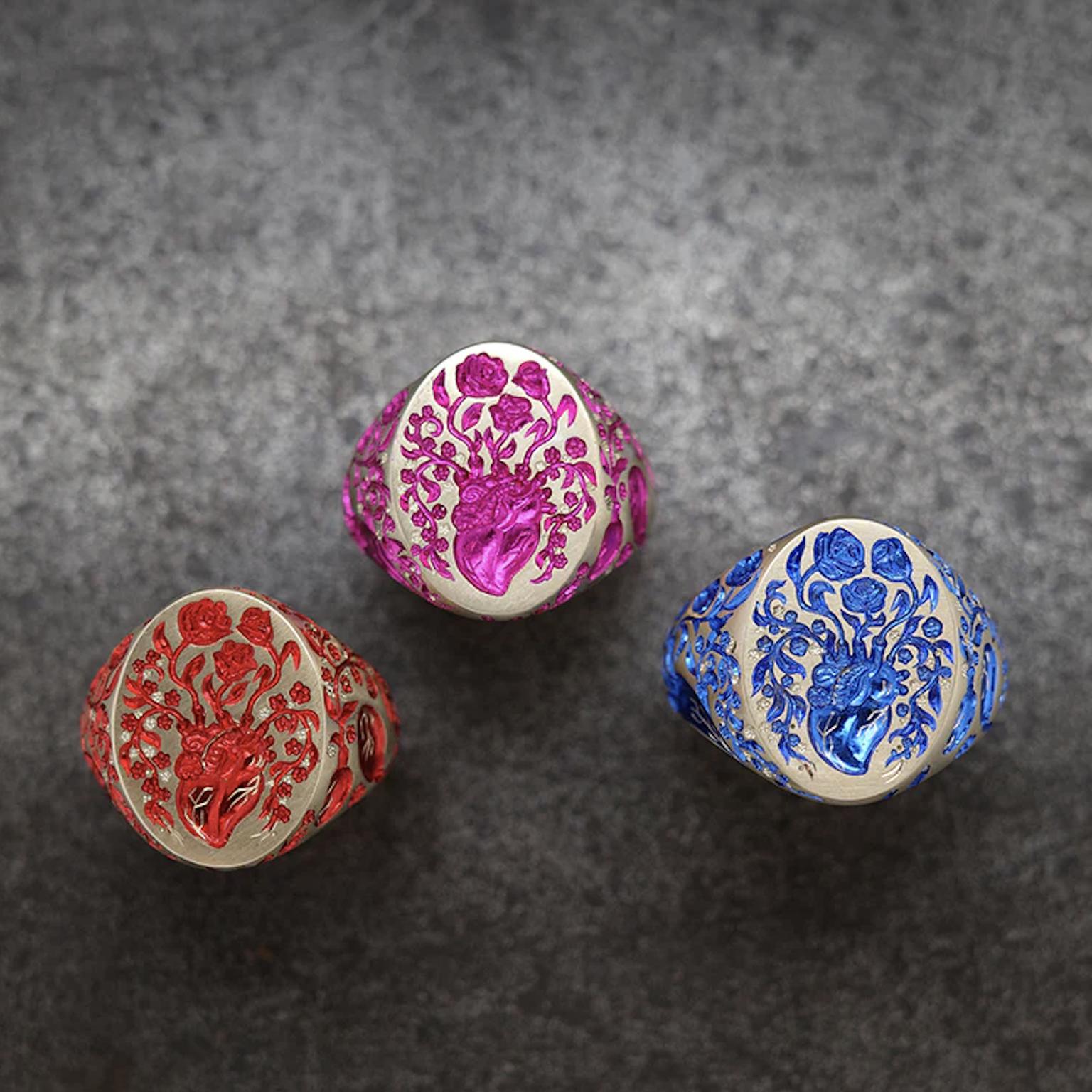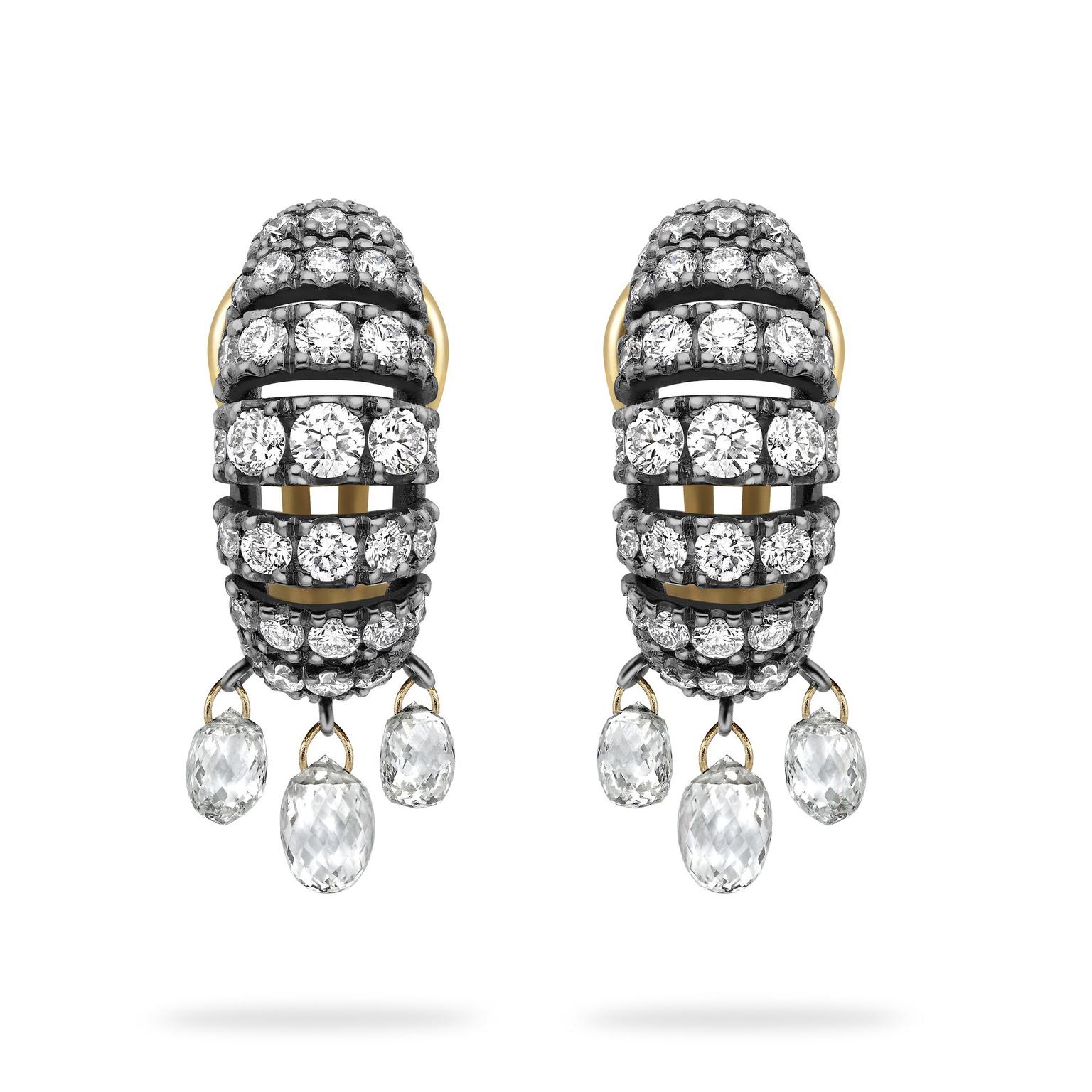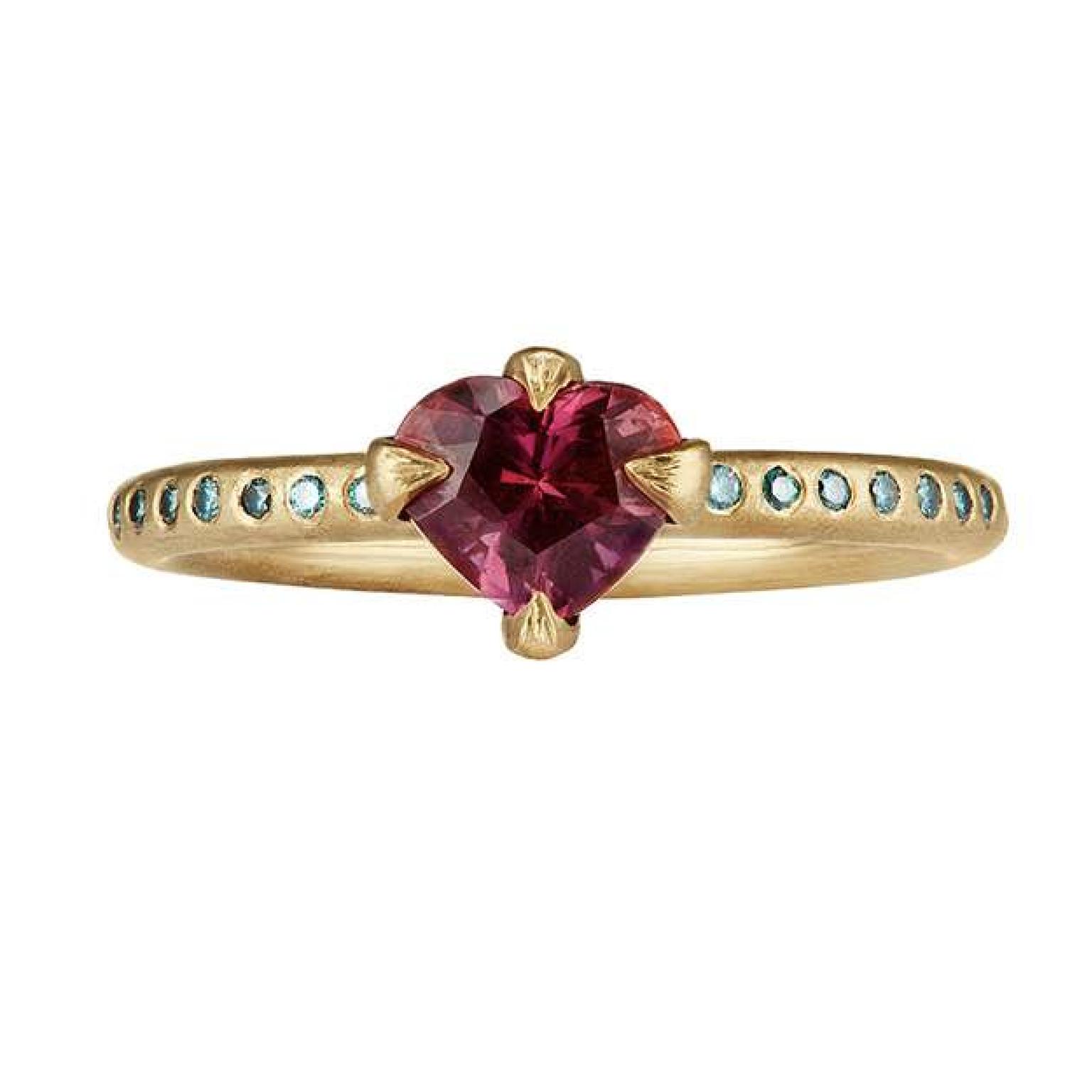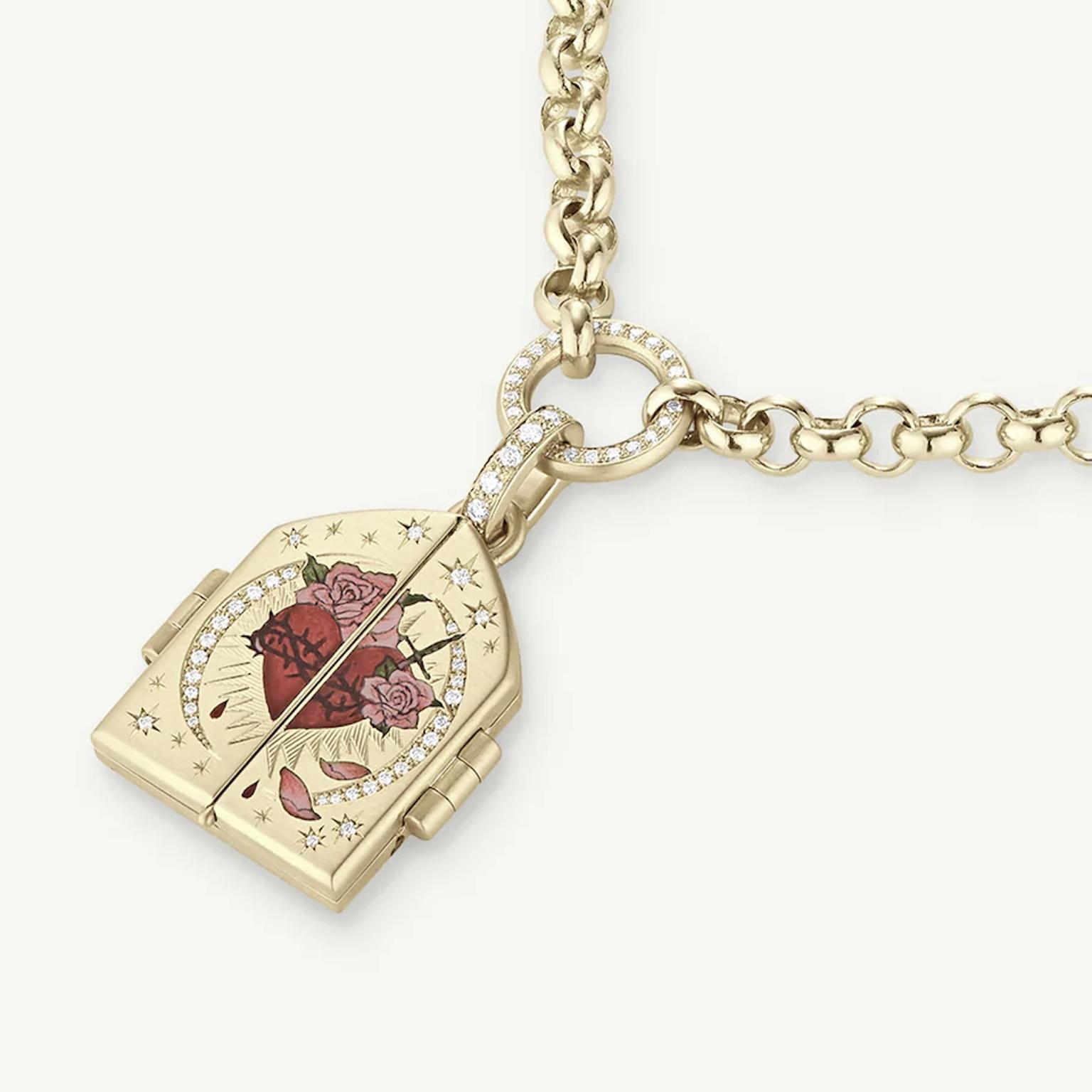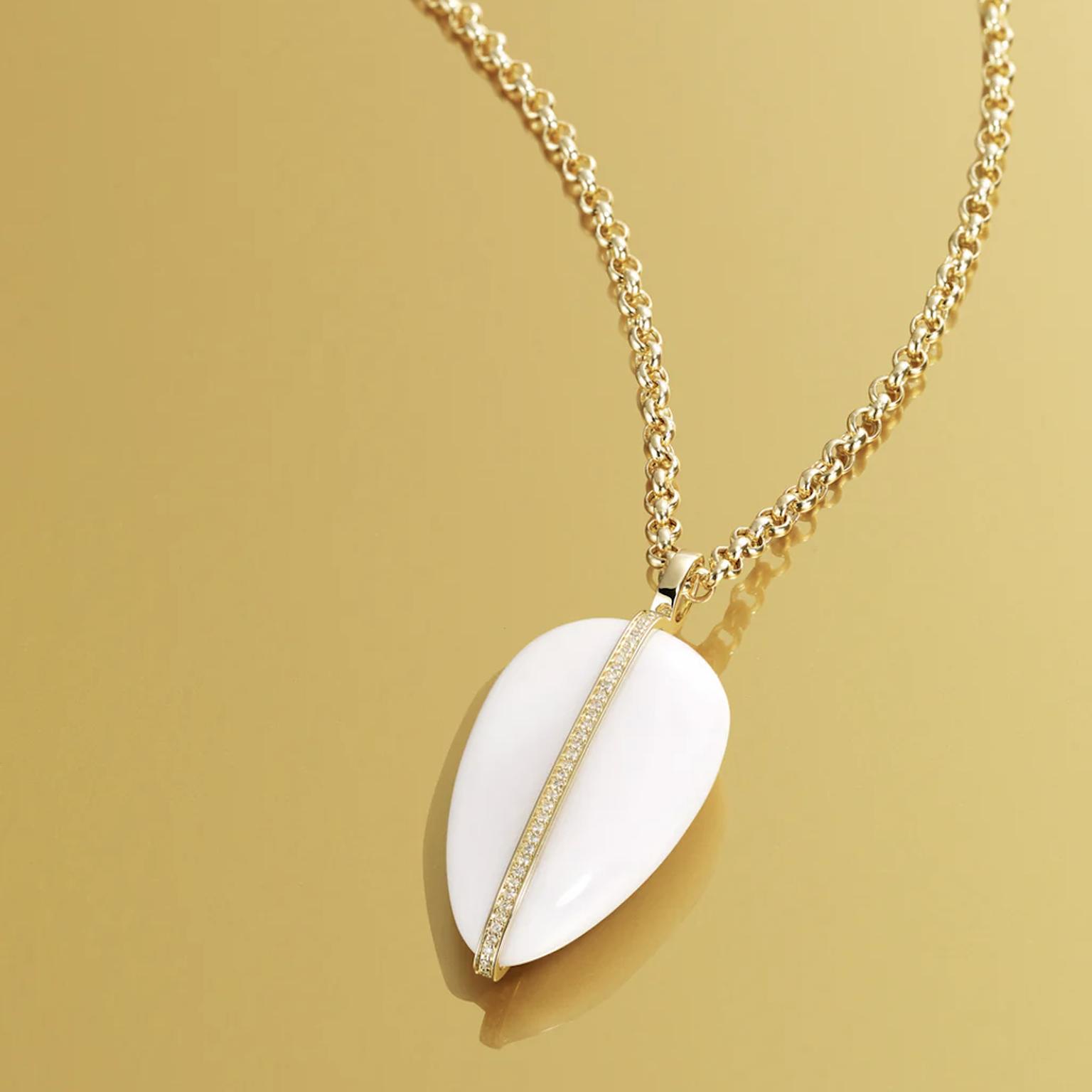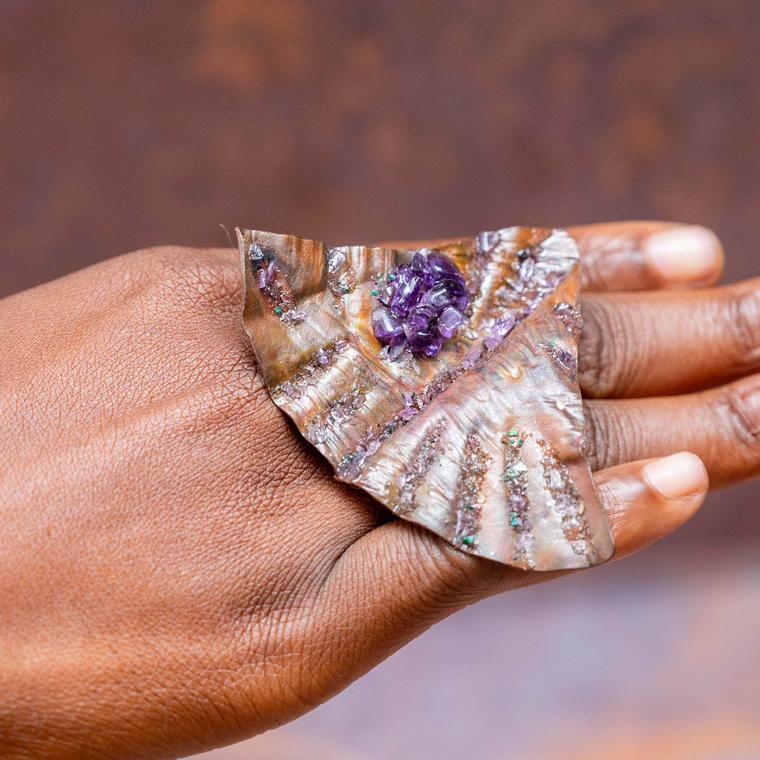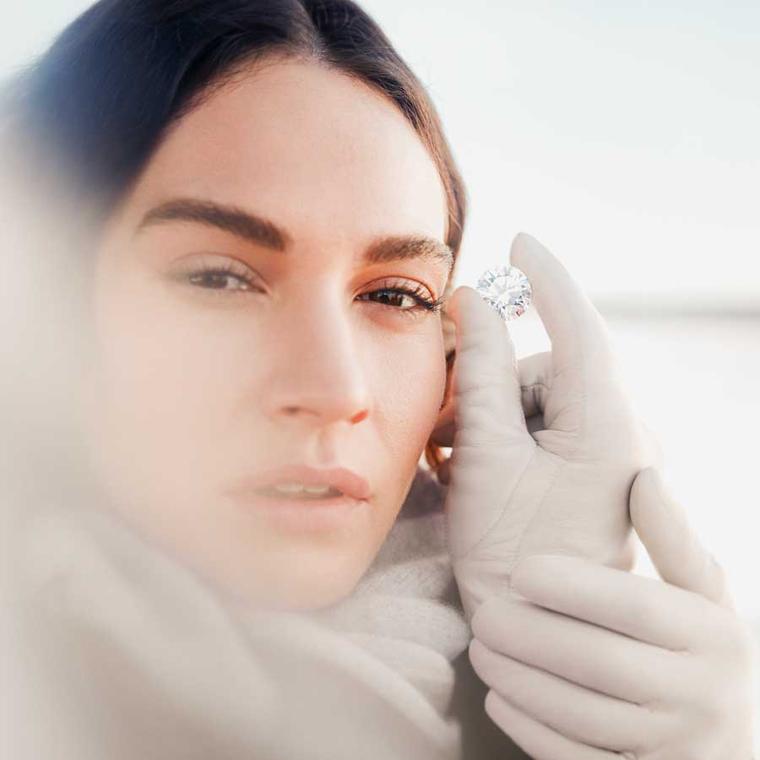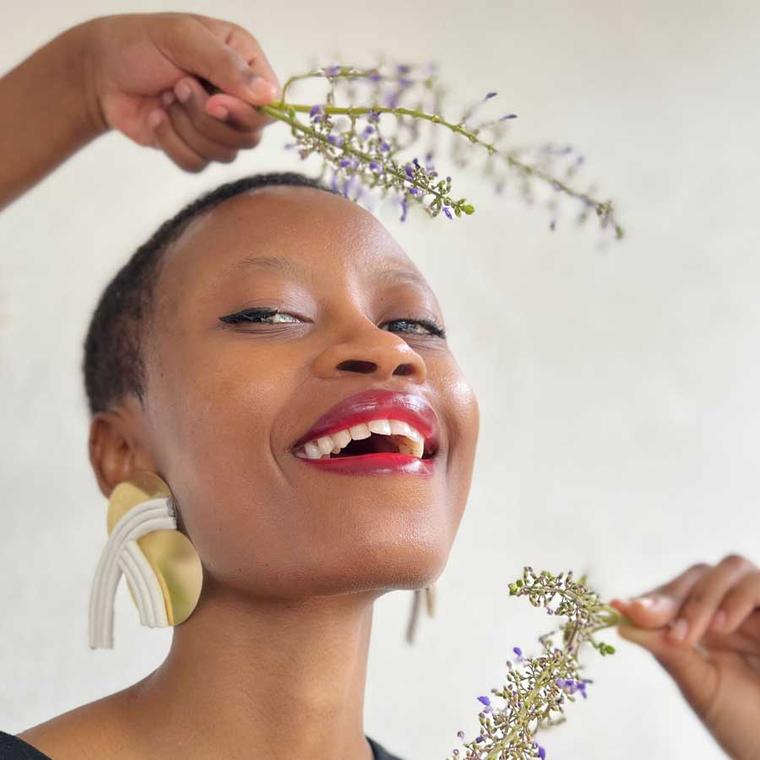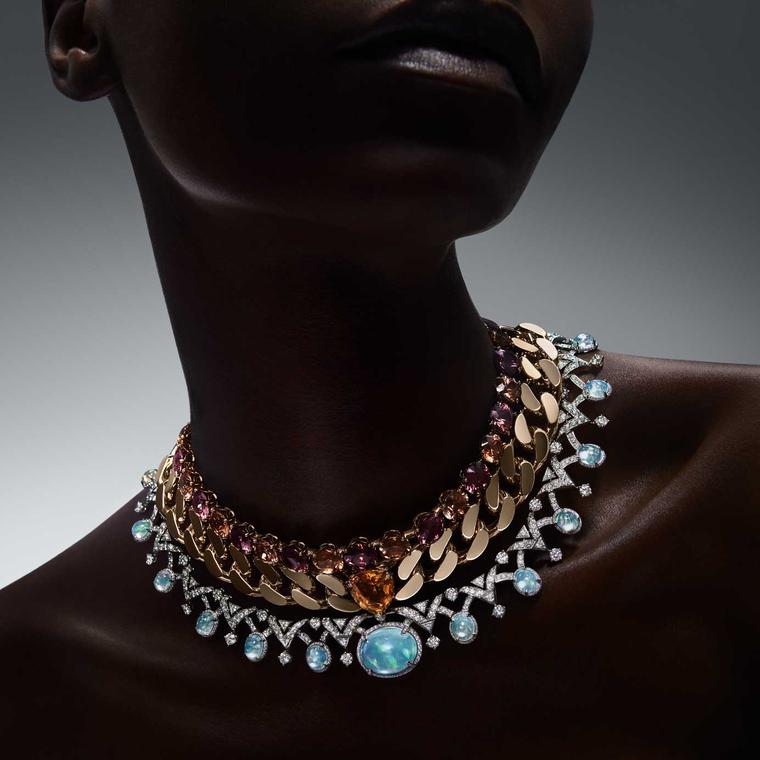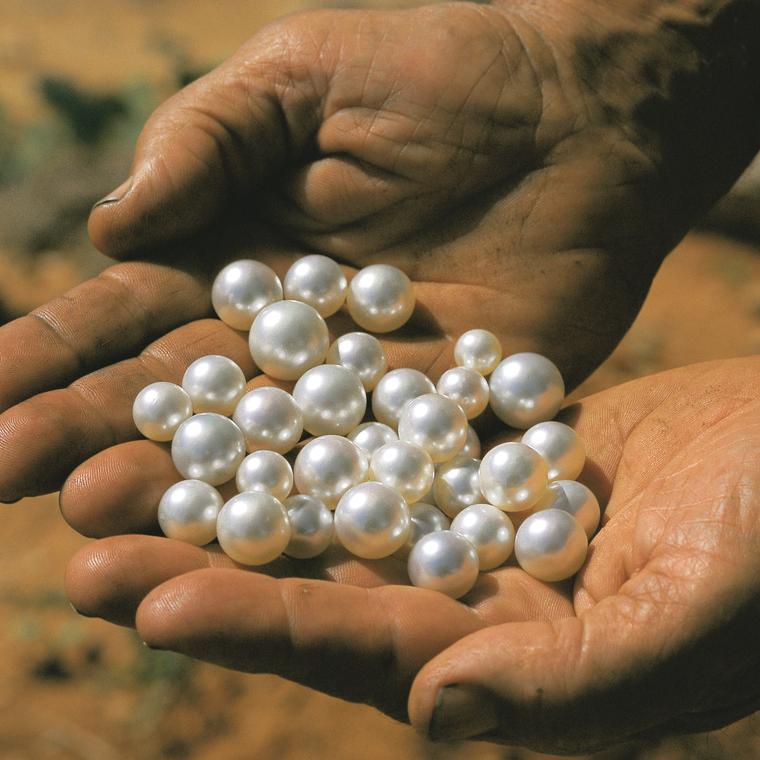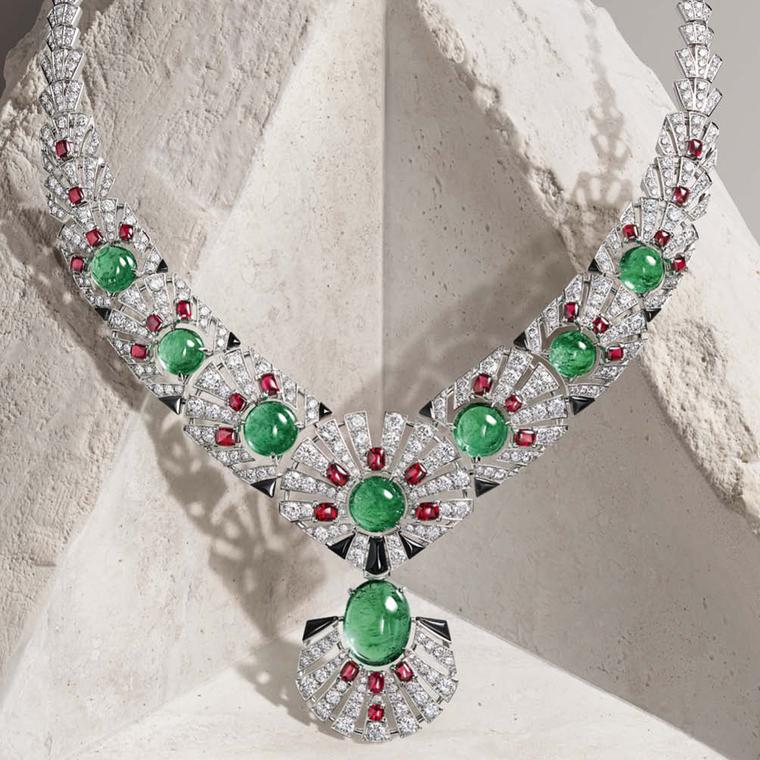Across England, a growing number of independent jewellers are redefining what contemporary jewellery can be. Some are long established; others are emerging voices. What unites them is a commitment to craftsmanship, ethical sourcing, and deeply personal design.
Working in studios from London to Cornwall, they use traditional techniques—seal engraving, lost-wax casting, champlevé enamel—to create pieces that tell stories and carry meaning. Their jewellery is slow-made, symbol-rich, and rooted in purpose.
This article highlights seven designers whose work stands out within this wider movement—each offering a distinct and thoughtful approach to the art of jewellery today.
Jessie Thomas didn’t always intend to follow in her father’s footsteps. She began in the film industry before choosing to train as a goldsmith under her father, David Thomas—a master craftsman who apprenticed with Georg Jensen and the Swedish Crown Jewellers, and whose work is held in the collections of the V&A and the Goldsmiths’ Company.
Now working independently from her Chelsea studio, Jessie applies traditional techniques to create pieces with a modern sensibility. Her designs—hammered rings, baroque pearls, and antique diamonds in subtly irregular settings—favour texture and natural asymmetry, while maintaining a high level of precision and control. She works exclusively with Fairtrade or recycled gold and ethically sourced stones, often choosing old-mine cuts or Canadamark-certified gems for their character and traceability. Though her training was rooted in heritage, her voice is distinctly her own: intuitive, tactile, and quietly expressive.
Click here to watch an Instagram reel about Jessie Thomas
On the tidal shores of West Cornwall, Emily Nixon creates jewellery that looks as though it could have been washed up by the sea. Working from her studio near Hayle, where she’s based with her family, Nixon begins each piece by pressing wax into seaweed, stones, and rock surfaces she finds along Mount’s Bay. These impressions, shaped by the coastal landscape, are then cast in recycled gold or silver using the ancient lost-wax technique—a method that captures even the most delicate fissure or grain.
Nixon entered the world of jewellery through her background in textiles and exhibition curating. After studying at Goldsmiths in London, she moved to Cornwall and worked at Newlyn Art Gallery before launching her own label in the early 2000s. What began as a personal creative pursuit has since grown into a thriving independent business. Today, she leads a small team of makers and is preparing to open a new studio and café in a converted Unionist Club in Penzance—a space that reflects her vision of jewellery as lived-in, social, and rooted in place.
The materials she uses—recycled metals, ocean-coloured sapphires, and salt-and-pepper diamonds—reflect both ethical commitment and aesthetic instinct. Each piece is finished in-house, often over several months, to preserve the rawness of its form without compromising on craft. Nixon’s work doesn’t imitate nature; it channels it.
This year, she introduced a men’s line of rings and signets—solid, sculptural, and built to feel as if they’ve been unearthed after years buried in sand. Her son George helped shape the concept and now wears the pieces himself, as do many of his friends. It’s a telling reflection of Nixon’s ethos: jewellery that speaks across generations, shaped by the landscape, and made with care.
Click here to watch an Instagram reel about Emily Nixon.
Founded in London in 2018 by Cece Fein Hughes, Cece Jewellery has quickly earned a reputation for bold, talismanic pieces that fuse fine craftsmanship with storytelling. With a background in History of Art and experience working in auction houses, Hughes turned to jewellery as a way to express the symbolism and narrative she felt were missing in contemporary design. Today, she leads a small in-house team in London, collaborating with master engravers, enamellers and setters to bring her distinctive designs to life.
Each piece begins with a solid base of recycled 18-carat gold, hand-engraved with imagery drawn from mythology, folklore and tattoo culture—flaming hearts, serpents, celestial symbols and personal emblems. Using the traditional champlevé technique, recessed areas are filled with richly coloured enamel and kiln-fired, creating miniature scenes in vivid relief. The process is painstaking, with every detail carefully carved and fired multiple times to achieve depth and durability.
Hughes describes her jewellery as modern-day heirlooms—intimate, symbolic and built to last. Much of her inspiration stems from her upbringing in Dartmoor, where wild landscapes and local legends shaped her early imagination. She has spoken about her fascination with the visual language of tattoos and the power of wearing something that tells a story or marks a personal milestone.
The brand’s bespoke work has become a key part of its success. In 2024, Cece Jewellery made headlines when Taylor Swift was gifted a custom enamel ring designed by Gigi Hadid. Featuring Swift’s cat, Benjamin Button, surrounded by personal symbols—including the number 13, a pearl halo, and hidden references to her latest album—it was completed in just three weeks and sparked a wave of custom commissions.
Cece Jewellery now employs around a dozen artisans in its London studio and was named to Forbes 30 Under 30 Europe in 2023 for its creative approach to ethical luxury. Prices for bespoke rings typically begin around £8,000, and lead times can extend to several months. Despite the growing attention, Hughes continues to centre her practice on narrative: jewellery as an intimate form of expression, steeped in meaning and made by hand.
Click here to watch an Instagram reel about Cece Jewellery
Working from his East London studio, Castro Smith has carved out a distinctive space in contemporary jewellery through the ancient art of seal engraving. Originally trained as a painter and printmaker, he made the transition to metalwork in the mid-2010s after securing a place on the prestigious Goldsmiths’ Company apprenticeship in Hatton Garden. There, he specialised in reverse intaglio engraving—a meticulous technique in which designs are cut into metal in reverse so that, once cast, they emerge in relief.
Each ring begins with a drawing, then undergoes hours of hand engraving under magnification. The designs are layered with symbolism—snakes, wolves, skulls, and celestial motifs—often referencing mythology, medieval iconography, or biology. The results are richly detailed, textural pieces that blur the line between sculpture and ornament.
In 2017, Smith received a Churchill Fellowship, which enabled him to travel to Japan and study traditional metal patination and hand engraving under master craftsmen. The experience deeply informed his practice, introducing techniques and philosophies that now underpin much of his work. He often cites this immersion in Japanese craftsmanship as a turning point in how he approached both precision and storytelling in his designs.
Smith describes jewellery as “a portable form of storytelling,” and his work bears that out—rings that carry hidden inscriptions, layered meanings, and a sense of personal mythology. His pieces are typically made to order, and many are bespoke commissions, often incorporating symbols chosen by the wearer. He has also exhibited at Goldsmiths’ Fair and worked under the patronage of Sarabande, the charitable foundation established by Lee Alexander McQueen to support emerging creatives.
While his style is deeply rooted in heritage craft, Smith’s appeal is distinctly contemporary. His rings are sought out by collectors looking for pieces that are not only technically masterful but emotionally resonant—objects that feel as though they were forged with narrative at their core.
Click here to watch an Instagram reel about Castro Smith.
Founded in London in 2016 by Sophie Karg, By Pariah emerged from a desire to redefine what luxury jewellery could look—and feel—like. The brand takes its name from a New York Times article titled The Outcast of the Islands, which inspired Karg to build a label that would celebrate raw beauty, quiet strength, and individuality. What began as a minimalist collection has grown into a fine jewellery brand known for its sculptural style and commitment to sustainability.
Each piece starts life as a hand-carved wax form, cast in recycled 14k or 9k gold or vermeil. The brand works with small specialist workshops to finish and set the jewellery, often choosing uncut or minimally polished semi-precious stones like green agate, onyx, and carnelian. These materials are selected for their natural imperfections—swirls, inclusions, and texture are embraced rather than concealed. The result is jewellery that feels elemental: tactile, grounding, and quietly powerful.
Sustainability sits at the heart of By Pariah’s philosophy. From the outset, Karg has committed to using only recycled metals and conflict-free stones, with packaging and supply chains also carefully considered. The brand has become a go-to for clients seeking timeless pieces that are ethically made and built to last—objects that transcend seasons and trends.
By Pariah has earned a loyal following for its restrained aesthetic and transparent values. It has been featured in Forbes, Marie Claire, and Liberty London as a standout in the ethical fine jewellery space. In 2023, Karg was included in Forbes Europe’s 30 Under 30 for building a brand that pairs modern design with a sustainable business model.
Designed to be worn every day and cherished for decades, By Pariah’s pieces are quiet statements—proof that jewellery can be both beautiful and responsible, without compromise.
Click here to watch an Instagram reel about By Pariah.
Founded in west London in 2017 by Eliza “Lylie” Walter, Lylie is part of a new wave of jewellers challenging the norms of fine jewellery production. From the beginning, the brand was conceived with a clear mission: to create elegant, meaningful pieces without relying on newly mined materials. Today, Lylie operates from a small, female-led studio in London, working closely with a network of British workshops to craft every piece with precision and care.
At the heart of the brand is a closed-loop model. Gold is sourced through Lylie’s own “Gold Exchange” scheme, which invites customers to trade in unwanted jewellery, dental gold, and electronics waste in exchange for credit. This salvaged material—alongside recycled antique and lab-grown diamonds—forms the basis of the collection. Every ring, pendant, and earring is made using traditional goldsmithing techniques, ensuring that sustainability is paired with lasting quality.
Walter, who trained as a goldsmith in Hatton Garden after studying art history, was motivated by a desire to offer clients jewellery they could feel proud of—from both an ethical and an aesthetic standpoint. She has been vocal about the environmental cost of mining and the lack of transparency in many areas of the jewellery industry. For her, circularity isn’t a buzzword—it’s a foundation.
In 2024, Lylie became a certified B Corporation, a designation that reflects the brand’s verified commitment to environmental and social impact. Packaging is plastic-free, fully recyclable, and minimal by design. Clients can book online or in-studio consultations for bespoke projects, including engagement rings, each one backed by full material traceability.
Lylie’s designs are understated and timeless, made to be worn daily and passed down through generations. But their true innovation lies beneath the surface—in the way they rethink how fine jewellery is sourced, made, and valued.
Click here to watch an Instagram reel about Lylie.
Shakti Ellenwood has been crafting jewellery with intention since 2000, after training as a goldsmith in San Francisco. For many years, she worked from a peaceful atelier in Devon, where clients would often visit for bespoke consultations and to experience her ritual-led approach to making. She is now based in London, working from a studio at the Goldsmiths’ Centre in Clerkenwell, while Devon remains an important part of her creative journey.
Each piece is handmade in 18-carat Fairmined gold using traditional techniques, and set with traceable gemstones such as CanadaMark diamonds, Montana sapphires, and rubies. Ellenwood refers to her creations as “little gold prayers”—jewels that carry intention, spiritual meaning, and a sense of care. Mantras are sung at the bench, and every piece is crafted slowly, deliberately, and with symbolic purpose.
A certified B Corporation since 2022, Ellenwood is one of the few artisanal jewellers to hold the designation. Her studio has been recognised as “Best for the World” for community impact, and she donates a portion of her revenue to charities including The Childhood Trust and Sea Shepherd UK. All packaging is plastic-free, and materials are responsibly sourced throughout the process.
Her designs are elegant and understated, but their power lies in their depth. For Ellenwood, jewellery is not simply an object of beauty—it’s a ritual, a source of protection, and a quiet form of empowerment.
Click here to watch an Instagram post about Shakti Ellenwood.
Across these seven studios, a quieter kind of luxury is taking shape—rooted in craft, meaning, and responsibility. Whether through engraving, enamel, sculptural forms or sea-forged textures, each designer offers a personal vision of what jewellery can be today.
Their styles may vary, but their values align: ethical sourcing, thoughtful production, and a deep respect for materials and story. This is jewellery made with care—built to last, designed to connect, and crafted to mean something.


